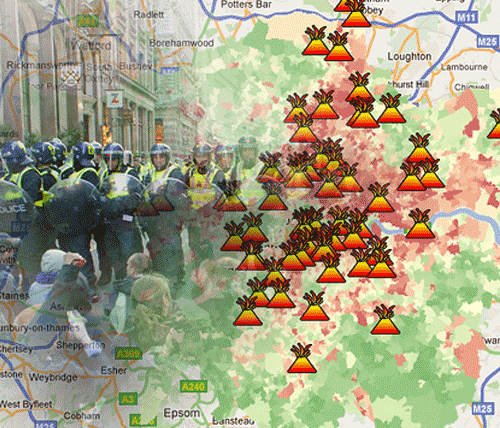 NEWS
NEWS
 NEWS
NEWS
 NEWS
NEWS
![]() The London riots that have been going on recently are taking a serious toll from residents, including shop owners who have suffered substantial damages and even deprived of their livelihoods. One example is the 89-year-old Aaron Biber, whose barber shop that he has been running for over 40 years was hit by a wave of protestors.
The London riots that have been going on recently are taking a serious toll from residents, including shop owners who have suffered substantial damages and even deprived of their livelihoods. One example is the 89-year-old Aaron Biber, whose barber shop that he has been running for over 40 years was hit by a wave of protestors.
Throughout the past few days, we reported how law enforcement agencies in England suspect rioters are using social media to communicate and coordinate their actions. Home secretary Theresa Maywill will be holding meetings with representatives from Facebook and Twitter in the coming weeks–networks that may eventually be temporarily blocked in the nation. In the case of Biber, however, three students showed that social media can also be used for good during these troubling times.
Bjorn Conradi, Sophie Browness and Omid Sard, who work at a London ad agency, started an internet campaign that helped raise £25,000 for the rebuilding of Biber’s shop.
“The big issue we also wanted to highlight was there was a lot of talk about social media enabling these riots. We wanted to show that young people and social media can also do a lot of good things,” Conradi told WSJ in an interview.
In addition to Facebook and Twitter, mobile is also involved. RIM recently gave local authorities access to its messaging platform, BBM, despite of a recent threat from hackers. The company’s blog has been breached, and a message was left behind saying that the attackers have obtained access to and will release employee data should the phonemaker not reverse its decision to cooperate with investigators.
Mobile is used by protestors for malicious purposes, but just like in the case social media, there are some who use it for other purposes. Citizen journalism has grown immensely in light of the riots, and the vigilante London Riot Facial Recognition group is using smartphones to identify protestors.
Another interesting highlight comes from NPR correspondent Matt Stiles, who used public data to create a map outlining the location of recent protests.
Support our mission to keep content open and free by engaging with theCUBE community. Join theCUBE’s Alumni Trust Network, where technology leaders connect, share intelligence and create opportunities.
Founded by tech visionaries John Furrier and Dave Vellante, SiliconANGLE Media has built a dynamic ecosystem of industry-leading digital media brands that reach 15+ million elite tech professionals. Our new proprietary theCUBE AI Video Cloud is breaking ground in audience interaction, leveraging theCUBEai.com neural network to help technology companies make data-driven decisions and stay at the forefront of industry conversations.